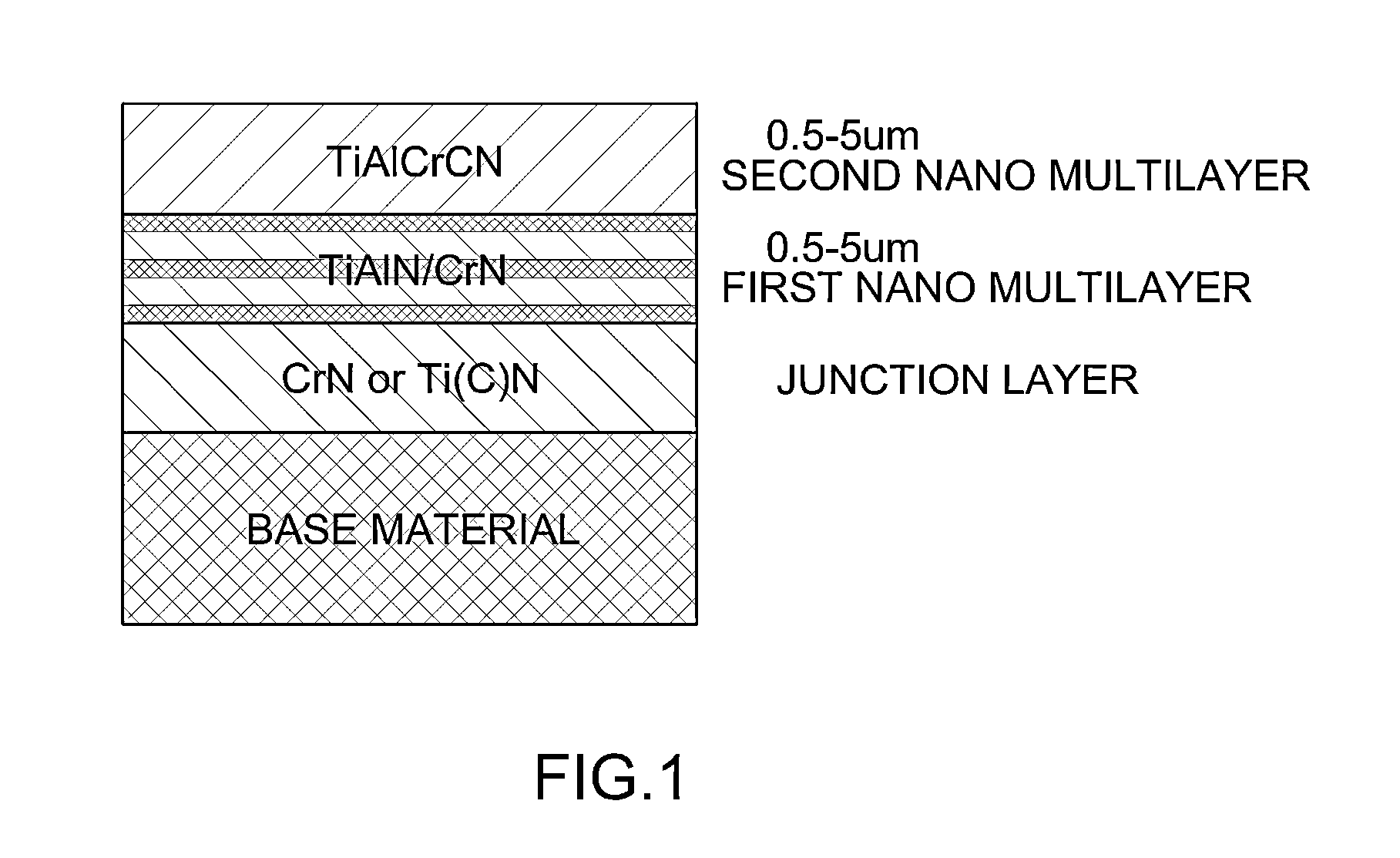Multi-layer mold coating
a multi-layer mold and coating technology, applied in the direction of superimposed coating process, manufacturing tools, shaping tools, etc., can solve the problems of extending the reducing the service life of the tool piece, so as to achieve low friction, prolong the mold life, and reduce the effect of friction
- Summary
- Abstract
- Description
- Claims
- Application Information
AI Technical Summary
Benefits of technology
Problems solved by technology
Method used
Image
Examples
example
[0040]As shown in Table 1 below, a CrN junction layer may be coated on the surface of a mold base material in a thickness of about 4.9 μm by the above described PVD method, and then a first TiAlCrN nano multilayer may be coated on the CrN junction layer in a thickness of about 4.2 μm. Thereafter, a second TiAlCrCN nano multilayer may be coated as the uppermost surface layer in a thickness of about 1.1 μm. The resulting coating texture is shown in FIG. 2.
TABLE 1Comp. Comp. Comp. Comp. Ex. 1 Ex. 2 Ex. 3 Ex. 4 Embodiment SurfaceVC TiAlN AlCrN AlTiCrN4—MoS2 TiAlCrCNtreatment / Coating Method TD PVD PVD PVD(+Spraying) PVD Thickness8.4 9.5 9.8 9.5 10.2 (μm) (SCrN—4.5TiAlN) (SCrN—4.8AlCrN) (4.9CrN—4.6AlTiCrN) +(4.9CrN / 4.2TiAlCrN—1.1TiAlCrCN) 20 μm MoS2
PUM
| Property | Measurement | Unit |
|---|---|---|
| thickness | aaaaa | aaaaa |
| thickness | aaaaa | aaaaa |
| tensile strength | aaaaa | aaaaa |
Abstract
Description
Claims
Application Information
 Login to View More
Login to View More - R&D
- Intellectual Property
- Life Sciences
- Materials
- Tech Scout
- Unparalleled Data Quality
- Higher Quality Content
- 60% Fewer Hallucinations
Browse by: Latest US Patents, China's latest patents, Technical Efficacy Thesaurus, Application Domain, Technology Topic, Popular Technical Reports.
© 2025 PatSnap. All rights reserved.Legal|Privacy policy|Modern Slavery Act Transparency Statement|Sitemap|About US| Contact US: help@patsnap.com



